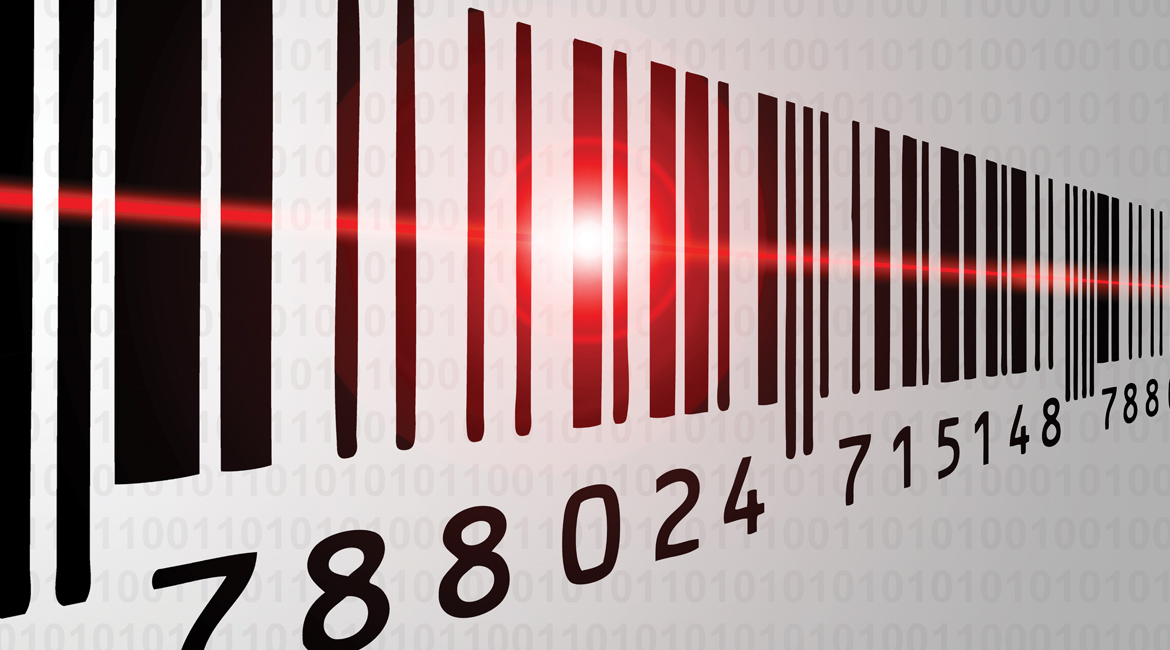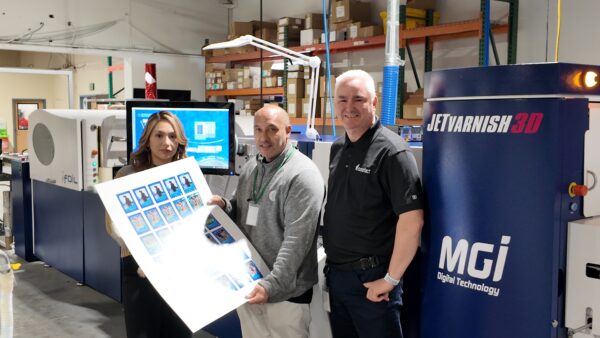These products are the ideal packaging deal for your customers.
Should selling label and barcode label printers be part of your business plan heading into the second half of 2023? These markets are proven sources of diversification for many office equipment dealers looking for alternative revenue streams. In the printer-sphere, volumes seem to have shrunk everywhere, “but not when it comes to labels and barcodes,” claimed Andy Scherz, senior product manager at Epson America. “Labels are the only print market where the future is growing and boundless. The volume of labels being produced annually is up substantially, as is the amount of label printing equipment being sold.”
The good news for office technology dealers is that most companies already have label printers, which means they have label printing needs. “Don’t allow someone else to come in and poach your existing customers,” urged Scherz.
The COVID-19 effect has boosted label growth over the past two years. The dreaded virus acted as a catalyst, expediting the popularity of online shopping during the pandemic. E-commerce sales increased by 43% in 2020, rising to more than $815 billion (from $571 billion in 2019), according to the U.S. Census Bureau’s Annual Retail Trade Survey, as all those boxes headed for home deliveries drove demand for shipping and return labels.
“Every warehouse has some kind of label printer,” observed Warren Doherty, large format solutions specialist at SumnerOne, a dealership based in St. Louis. He is also responsible for the Midwest firm’s Toshiba printers, including label devices. He brings OEM experience from Konica Minolta and, before that, Océ.
SumnerOne reps have successfully replaced competing label printers with Toshiba models in Arkansas, Kansas, Missouri, Oklahoma, and other customer sites. “We love their products,” said Doherty. “Toshiba consumables are less expensive, and there are larger label options in roll sizes.” Perhaps the best feature, he noted, is that the company’s print heads are end-user replaceable.
Put a Label on It
According to Epson’s Scherz, during the heat of the pandemic, a lot of label printing was brought in-house. In addition to the shipping industry, label demand skyrocketed for medical facilities and restaurants. “Think about it: Just about every nurse’s station in a hospital or clinic has at least one label printer,” commented Scherz.
“Online orders increased by some 20% in the hospitality industry alone,” added Justin Garvey, business development director for Toshiba America Business Solutions (TABS). Forty percent of all restaurant sales this year are expected to be generated online, he added.
“Uber Eats, Postmates, and all these other meal-delivery companies need labels,” pointed out TABS colleague and business development manager Brady Killion. Fast-food chains, such as Chick-fil-A and Starbucks, are taking in more drive-thru and outside orders, which require printed receipts.
Recently TABS entered the soft-launch phase of its DL1024 liner-less, dual-sided printer, which outputs 4” labels with no liner waste. In late 2023, the OEM plans to roll out a more sustainable, liner-less addition (still in concept stage) to its HMS series. “The new model will be ideal for labels affixed on to-go beverage cups,” said Garvey.
Meanwhile, Walmart and other big-box grocery stores are fulfilling huge increases for online shoppers who want touchless, convenient curbside delivery. To run accurately and efficiently, these pick-and-pack operations require printed labels and receipts, too.
Supplying Demand
To get ideas about how to meet some of the increasing demand, last summer, more than 13,500 people attended Labelexpo Americas ‘22, where some 170 companies exhibited, including Epson America and Konica Minolta Business Solutions USA, the latter previewing its PKG-1300, a high-speed, automatic digital corrugated and folding carton printer. (See sidebar.)
Meanwhile, Epson remains bullish about color opportunities, stressing the consistent quality of the PrecisionCore technology featured on all of its printing devices. “All of our printers use the same inks and printheads,” explained Scherz. “So, whether your customers are printing 2,000 labels a day or just a handful, they can expect the same, high-quality image resolution.”
Epson color label printers range from $2,000 on the low end, and up to $9,000 for its ColorWorks C4000 retail point-of-sale device. End-customers are printing labels in color for the highly regulated chemical industry, and grocery stores are producing more in-house labels due to the self-service popularity of salads, soups, and other foods. “Color labels also are used for product identification,” said Scherz, “as in cases of shoe boxes featuring an image of the shoe on the side.”
In the Pacific Northwest, the horticulture industry is another niche for color labels. “I can’t believe how much color inkjet business they do here,” noted Derek Voake, who began the new year as sales manager and general manager of Stafford Press, a label trade printer in Redmond, Washington. Using proprietary glue and stable label stock developed in-house, Stafford runs inkjet tags through modified Epson ColorWorks-C6500 series printers. On the day that The Cannata Report spoke with Voake in late January, the printer ran 500,000 labels to be resold to national and international customers.
Voake foresees nothing but more potential for producing color on demand. One example might be printing private labels for craft beer manufacturers and other industries. “During the holidays, they may brew a limited supply of a special recipe and only require a couple of hundred bottles,” he envisioned. “They could buy 2,000 blanks from us and let the Epson do its thing.”
Indeed, beverage and food packaging represent prime opportunities for labeling applications, according to Russell Doucette, product marketing manager at Konica Minolta Business Solutions U.S.A. For dealers getting into the label game, he noted one of the biggest differences is the ordering of bulk material. When it comes to knowledge about training, finishing, and the printers themselves, OEMs such as Konica Minolta offer complete services to assist their dealer partners.
Durable Colors
A sister company of Stafford, called WestHort, Inc., specializes in labels and tags for tree and plant nurseries, many of which prefer color coding for differentiation and quicker identification. Customers are particularly fond of the Epson CW-6500 printer’s 8¼-inch “throat width” for products such as 8-inch pot tags and tree wraps.
Many of these farms also employ radio-frequency identification (RFID) readers in the field for more efficient inventory control. “RFID is a growing market. The cost of hardware has come down, as has the cost of the antenna technology,” explained Voake, who spent more than 20 years as a thermal-transfer label broker. “It has reduced the time it takes for these nurseries to track inventory from weeks to hours.”
He added that the combination of Epson’s “amazing” inks and his firm’s durable adhesive lends itself to hazardous chemical applications as well, complying with federal regulatory criteria. “A [contents] label on a 55-gallon oil drum needs to remain legible—even after it has been submerged in the ocean for two years,” said Voake.
A highlight of Labelexpo was seeing the Epson ColorWorks CW-C6000P color inkjet label printer with peeler feature, in action. The device employs Epson’s trademarked “peel-and-present” matte ink to deliver 4” peeled labels on demand and in color at a price comparable to thermal transfer technology.
Solving label workflow challenges was a central theme in the OEM’s booth as well. “We now have remote management capabilities,” Scherz explained. Using Epson Device Administration (EDA), fleets with 25 to 50 print stations can be controlled with one touch from a single screen.
Sales Differences
“When it comes to who to talk to about thermal printers within the organization, there may be some carryover from the purchasing department or IT procurement,” said TABS’ Killion. Dealer reps also may need to target contacts on the operations and/or distribution side of the house. Any customer with a shipping function is a potential label customer, especially those in vertical markets such as education, healthcare, legal, logistics, manufacturing, and retail.
The type of label printer required depends on customer volume and frequency. Do they print ten single-color labels daily, where a basic, portable device will suffice? Or are they printing 24/7 and needing an industrial production machine? Quality and durability always are considerations. Is a customer-facing label needed, and how long does it need to last?
“Direct thermal is good for one to three months, but thermal transfer technology has longer durability—more than one year,” said Garvey. Resolution of 200 to 300 dots per inch (dpi) is adequate for most jobs, he explained, but 600 dpi is available for better clarity.
Ideal for entry-level volumes ranging from 20,000 to 30,000 pressure-sensitive labels per year, Konica Minolta’s 5-inch, toner-based models start at approximately $15,000. Automated roll-fed printers, such as the PrecisionLabel Series (formerly the Muratec brand), are the way to go for mid-range label producers yielding 100,000 annually. Label sizes increase up to 8.66” and MSRP is higher—around $42,000—but speed and automation gains add up quickly. Total cost of ownership and return on investment make sense for the right customers.
“For higher volumes, using cut-sheet [devices] and manually peeling and applying labels takes a lot of time, which translates to money,” said Doucette. The AccurioLabel Digital Press might be a better option for higher-end, production-level volume exceeding one million labels per year. Pricing starts at $200,000.
Reselling label and barcode label printers can be a strategic play for dealers, said Toshiba’s Garvey. “Today’s dealers compete with VARs, packaging distributors, and system integrators, but there’s money to be made from revenue on specialized consumable sales,” he said. It often is a natural fit because office equipment dealers are accustomed to competing on the value proposition of service, support, and technology.
Epson’s Scherz concurred that getting into the label print business can be highly profitable for a dealer. “Let’s say a $2,000 color printer produces $20,000 worth of labels, between replenishing ink and replacing ribbons, the recurring consumables’ stream can fetch ten times that revenue. But securing such high-profit margins takes some work.”
It’s not just about buying label stock and printing on it, he cautioned. “Customers look to dealers for help and consultation on more than just glossy vs. matte media options.” (Epson offers media guidelines on its website.) Dig deeper and inquire about details of the type of label needed. For example:
- What size is the label: tiny or gigantic? (Label converters can assist.)
- Is it being used by people with oil on their hands, or in a sterile environment?
- Does the glue need to stick firmly to a refrigerator or similar appliance?
- Or, does the adhesive need to be easily removable? (It doesn’t need to be so sticky.)
Technology Preview: Konica Minolta’s PKG-1300 Packaging Printer
According to Konica Minolta, the PKG-1300 provides vibrant color, water-resistance, automatic feeding, and unloading of pre-cut cardboard at a price point between $250,000 and $300,000 depending on the configuration: engine only, with feeder and/or with stacker. Developed with MTEX New Solution, a print manufacturer based in Portugal, the device was previewed on the show floor at Labelexpo last year and is targeted for an April 2023 launch to Konica Minolta’s direct and dealer channels.
If the volume is there, “box printing can be less complex than [printing] labels,” Konica Minolta Vice President of Product Management and Planning Dino Pagliarello told The Cannata Report at the show. “Think of e-commerce. Everything arrives in a box.” Corrugated packaging is not only for outer-box shipping anymore.”
Next-Level Barcode Label Printers
When contemplating prospects for the thermal barcode label printers, “dealers should first look at their existing customers of MFPs and print management,” recommended Justin Garvey, business development director for Toshiba America Business Solutions (TABS). Vertical markets that are naturals for barcodes include distribution/logistics/shipping, health care, libraries, manufacturing, and retail.
The prominence of barcodes seems to be visible nearly everywhere. The shipping space is rife with opportunities, agreed Andy Scherz, senior product manager at Epson America, who said: “Even granite is labeled with barcodes these days.”





